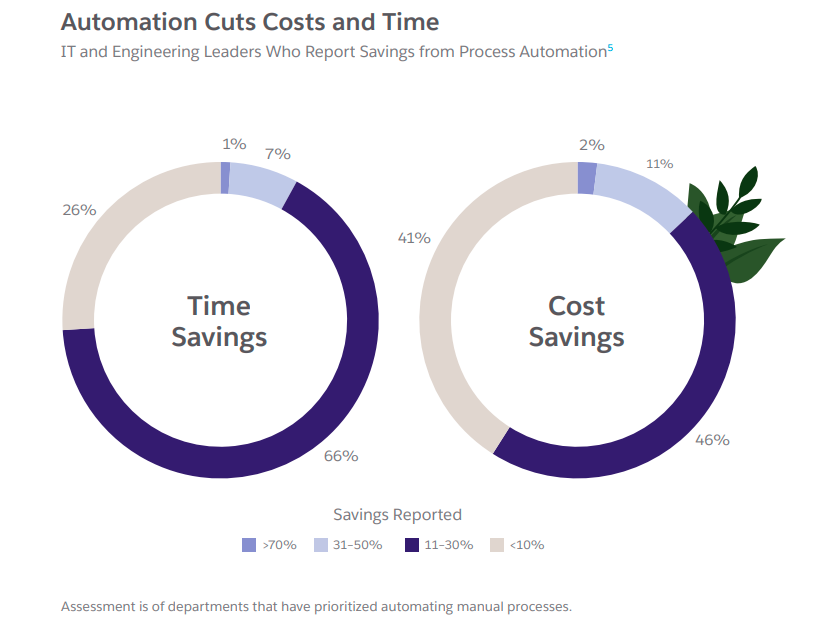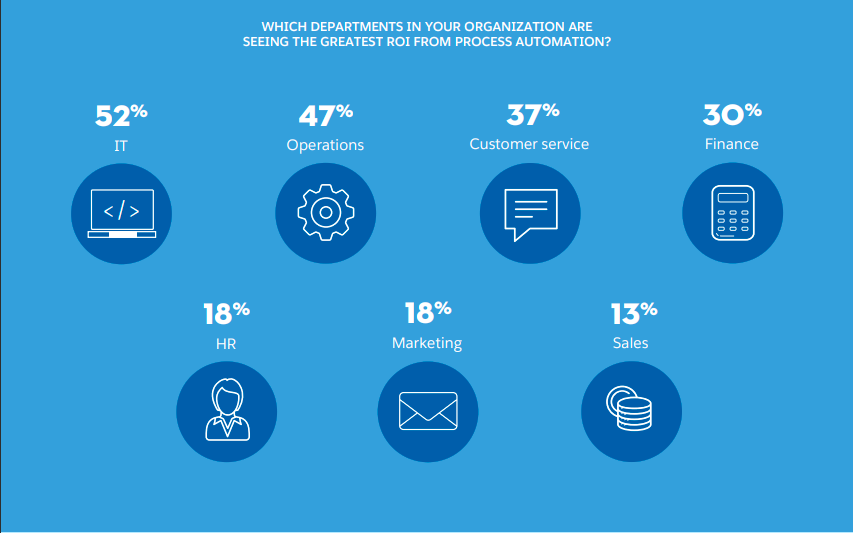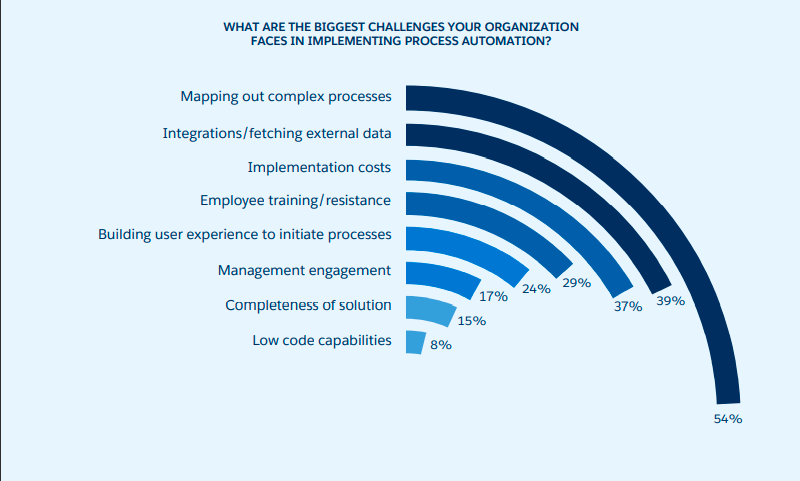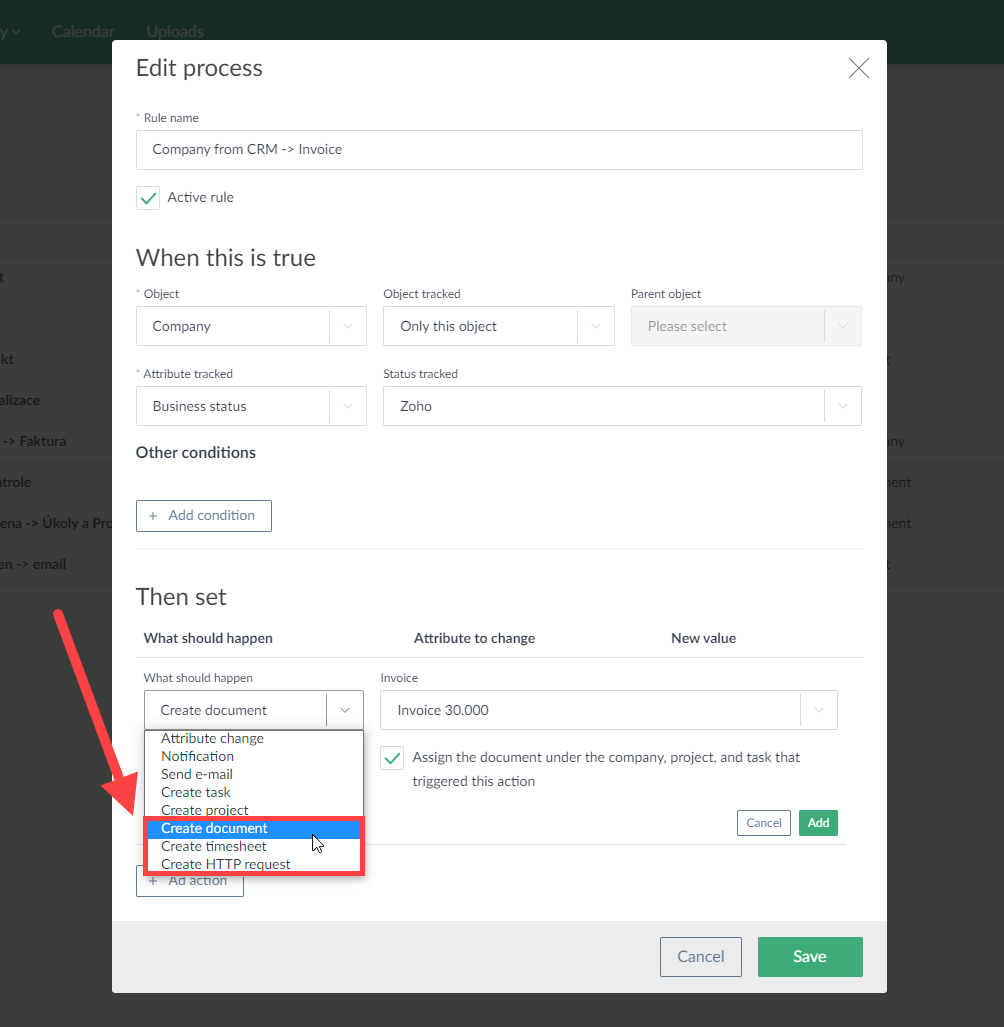Before automation, a small business’s options to scale were limited. You’d have to hire more personnel, invest in expensive software, and embrace more complex business processes.
To an extent, this reality is still true. Scaling is tough. But thanks to business process automation (BPA), small businesses can scale more sustainably and with greater confidence.
BPA can help you save time, reduce costs, eliminate errors, and free your workforce to focus on work that matters. And while BPA isn’t a quick, easy fix, it’s a sophisticated option for small businesses looking to optimize internal processes and grow sustainably.
So, here’s more on how to automate business processes to help your small business grow meaningfully.
🎓 CAFLOU® academy is brought to you by CAFLOU® - 100% digital business management software
What is business process automation (BPA)?
Business process automation (BPA) is the automation of repetitive business tasks through the use of advanced technology and software. Automating business processes can help organisations decrease costs, increase efficiency, improve accuracy, etc.
BPA can be applied to several business functions; any task that is repetitive and rule-based can, typically, be automated. So business process automation can be applied to various functions, spanning from HR to, say, sales.
Why small businesses need BPA
Medium-to-large enterprises are accustomed to making large investments in technology to improve operational efficiency, increase revenue, and cut costs. Since these businesses operate at a large scale, automation and process optimisation can yield significant results, despite the hefty investment. The returns are known.
These facts are not true for smaller businesses, too. Thanks to rapid advancements in technology, and business process automation software by extension, small-to-medium size businesses (SMBs) now have access to reliable, scalable, and affordable automation software (or business management systems with automation features).
Reduce costs
The cost and time savings associated with process automation are well established; tech leaders that have embraced automation report high returns on their investment.
To give you a better idea of the potential for savings, here’s a pie chart from Salesforce’s 2021 report on trends in workflow automation (source):

This high potential for cost and time savings empowers business leaders to reallocate employees to more specialised, impactful tasks.
Increase productivity
Almost 80 % of business leaders believe automation plays a key role in increasing productivity, and 85% agree that workflow automation can enable employees to prioritise work that helps meet vital business goals.
The evolution of business automation has fueled many fears of job loss, and while it’s true that some layoffs are inevitable, many businesses are investing in upskilling initiatives to reassign employees to more specialised roles.
Done right, automation empowers your workforce and encourages greater operational efficiency.
Improve employee satisfaction
Automation empowers your workforce to focus on specialized tasks; on work that matters. Research has found that automation not only improves employee engagement, but also reduces stress levels.
And it’s not just business leaders who have realized the value of automation; many employees believe that automating certain business processes will allow them to prioritize more important work.
Streamline workflows and management
As we’ve stressed before, automation empowers your workforce to focus on specialised tasks. And this means that, in many instances, BPA will work with your teams to achieve greater efficiency. With mundane, repetitive tasks automated, team members can achieve goals quicker, more efficiently, and with minimal errors.
How does BPA improve business process management (BPM)?
Business process management is a broad discipline that addresses how to streamline and optimise organisational processes. As you’d expect, BPM requires a great deal of analysis, modelling, testing, software implementation, and continuous improvement.
Thus, BPA can play a vital role in achieving BPM goals. As unoptimised, inefficient processes are outlined through BPM, BPA can streamline repetitive, rule-based tasks. The scope of business process automation is broad, spanning several key departments:

(source)
What should you consider before implementing BPA?
Not all business processes are automatable, and some are not worth automating. If an automation venture fails cost-benefit analysis, it may not be worth pursuing.
So, the first consideration for BPA implementation is whether the process is automatable. If the process cannot be broken down into repeatable, rules-based steps, then automating it is not possible. According to Salesforce’s report, mapping out complex processes is the greatest challenge organisations face in BPA implementation.
Moreover, if your personnel cannot break a process (that may be repeatable and rules-based) into the required steps, implementing automation will not be possible. This scenario brings us to the second consideration for BPA implementation - IT expertise and change management.

(source)
Businesses require personnel with automation expertise to implement BPA, and existing teams may require upskilling to work in setups that leverage automation.
What types of business processes should you automate?
As a general rule, business processes should be automated if and when automation can help achieve business goals. The most obvious goals are; cost reduction and time-saving, but automation’s advantages are not limited to these options.
Automation can also make critical processes more secure, reduce errors, and increase precision. For example, implementing BPA in accounts payable adds a layer of much-needed security by eliminating paper-based, manual steps. Risk is minimised and the chances of human tampering are removed entirely.
There are two more situations where you should consider automation - when it can directly benefit your employees, or your customers. Implementing automation to achieve these goals directly translates to business success.
A customer service function is the simplest example of how automation can improve your employees’ and customers' lives. In customer service, your support staff can be overwhelmed with tickets - especially if your team is small relative to the customer base. Here, BPA can improve efficiency and resolve customer queries faster by:
- Sending automated responses to queries with specified keywords
- Creating a single unified view of the customer’s data, empowering your support agents to respond quicker and with greater accuracy
Thus, a holistic approach to business process management helps businesses identify meaningful opportunities for automation, improving employee and customer satisfaction alike.
5 Steps to successfully implement business process automation (BPA)
Business process automation is a vital driver of digital transformation, and one that every business - small or large - is considering. If you’re looking to embark on your automation journey, here’s how you can get started with implementing BPA.
1. Consider your business goals
We have already outlined the specific types of business goals, but for the sake of completeness, let’s emphasise this point again. Your automation journey should help achieve business goals; that is its purpose. So consider these carefully before moving forward.
2. Identify opportunities for automation
This step formally comes under the methodology of business process analysis. In business process analysis, analysts dissect processes to determine their efficiency and impact. They then attempt to optimise processes, through measures such as BPA implementation.
As we discussed earlier, mapping out processes is the greatest challenge in BPA implementation. But overcoming it is necessary to proceed with implementation.
In general, this stage requires IT expertise and a firm understanding of business processes, so organisations usually rely on professional analysts. But, this option is not always feasible for small businesses - especially those with limited budgets.
Fortunately, many software solutions have identified this discrepancy and rose to the occasion. For example, CAFLOU is a business management system with in-built features to streamline BPA implementation. CAFLOU’s automation function includes:
- A workflow engine, which helps businesses create automatic actions when a defined condition is met, e.g. the system can create projects and tasks from templates automatically, delegate tasks or send notifications or emails.
- A recurring objects functionality, which automatically creates tasks, projects, invoices, or expenses with a specified frequency.
Similarly, other well-known business process and project management tools have in-built automation features to accelerate your automation journey and reduce implementation costs.
3. Employ cost-benefit analysis
We emphasised the importance of cost-benefit analysis earlier, but what does this mean practically? How can you begin to perform this analysis?
In some cases, performing a cost-benefit analysis for BPA implementation is straightforward. Time savings, for example, might be the simplest metric to track. You simply need to determine how much time is saved by automating a process, and then translate this time into cost savings.
For example, let’s say automating one of your business processes saves one of your IT support staff 30 hours a month. Let’s further assume you pay this employee $20 an hour. Your total cost savings, per month, will be $600.
However, some benefits are less obvious and more difficult to measure. For example, if BPA implementation reduces inaccuracies from a given process, calculating the costs saved from the increased accuracy can be challenging.
4. Prepare your team
While there are fears surrounding automation - the message of ‘robots will steal your job’ - many employees realise the benefits of automation and are ready to embrace it (source). However, as you embark on your automation journey, it’s important to have conversations about its implementation and ease employee concerns.
Moreover, BPA implementation will also invite structural changes that your team needs to be prepared for. Your employees’ daily tasks will inevitably change after specific tasks are automated, so their workdays should be adjusted accordingly.
If you’re implementing more advanced, complex automations, it’s also important to train your employees to work effectively with their new workflows.
5. Track, measure, and optimise
Process automation should streamline your operations and achieve business goals. But your first round of BPA implementation may not have the desired effect; if your forecasted results were greater than what is achieved, you’ll need to audit the automation processes.
Sometimes, automation can fail or underperform because some considerations were not accounted for in the flow. As a result, unaccounted challenges can disrupt the workflow and cause the automation to fail.
At other times, auditing your BPA implementation can reveal new opportunities for automation, or superior strategies.
So, your automation journey does not end with implementation. As with any business venture, it’s vital to prioritise continuous improvement.
How CAFLOU accelerates your BPA journey
CAFLOU is a fully integrated business management suite that helps small businesses streamline operations and collaborate better. CAFLOU’s automation features also help you optimize your BPA implementation.
With CAFLOU, you can automate with ease, e.g.
Create recurring objects
CAFLOU’s recurring objects feature saves you time by automatically creating business objects, such as tasks, projects or invoices or expenses, with a desired frequency. You can also automate report generation and have reports sent to clients on a recurring basis.
Implement end-to-end automation
You can use an intuitive workflow engine. CAFLOU lets you set multiple conditions for an action to place. This option helps you automate more complex business processes and reduce inaccuracies.

You can map out key business processes and automate them with CAFLOU’s workflow engine. Manage and streamline your BPA from one central, integrated platform.
Start your BPA journey
You can start your BPA journey with CAFLOU for free. CAFLOU offers affordable, flexible pricing plans to help small-to-medium-size businesses scale sustainably and leverage automation.
<< Back to all articles in Caflou Business Management Academy